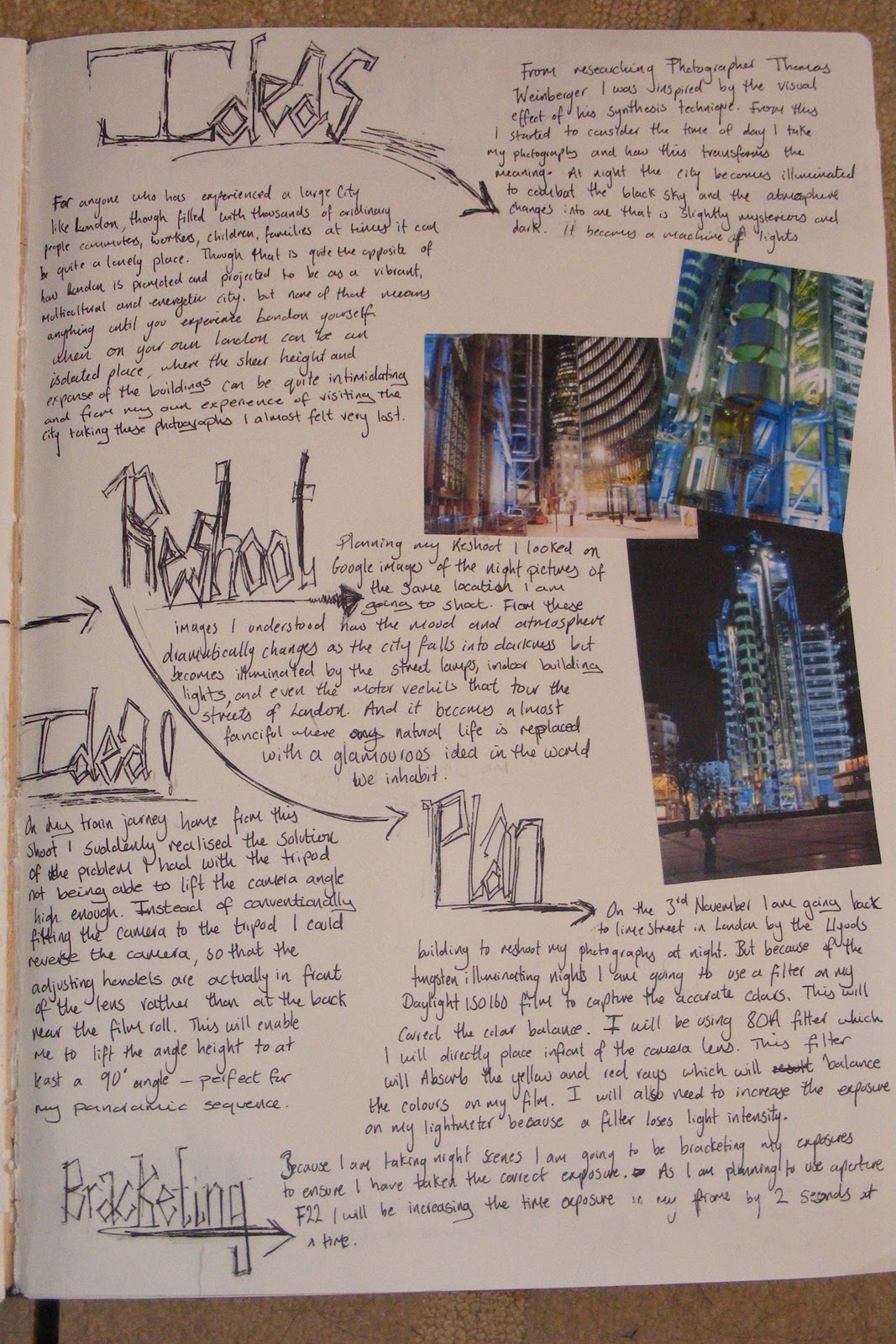Final Piece
For generations today life cannot be associated without cities. They continue to spring up around every nook and cranny of the Earths sphere, tacking control of the land that was once nature’s property. We summon up perceptions that might not reflect our own experiences where I have chosen to represent the city through these psychological values. My final piece is formed of three photographs in a vertical panoramic sequence that shows the night scene of a busy London street against the high rise buildings. Inspired by Muybridge’s panorama’s I felt that the city couldn’t be contained into one fixed frame and so I adopted his method but would change the orientation to demonstrate the sheer height and scale of man-made structures. By extending beyond the limits set by the photographic frame I wanted the viewer to truly appreciate and relive the act of expanding their vision as if they were there themselves. Studying photographer Thomas Weinberger and Sohei Nishino I was inspired by the cities transformation at night. The illuminated lights form a new atmosphere that combats a spectacular display against darkness. I was intrigued by how London was just as busy during the night as it was during the day and even more so of the noise created by these flashing and floating lights. But beyond this perception of the city being actively on the move twenty four seven, seemingly supported by the power and energy of the lights my own experiences conflicted with this view. On your own London is a huge space filled with thousands of people, you are tiny and insignificant compared to your own familiar environments. Faces constantly change, streets are overrun by taxis, buses, vans and cars, even the loud blasts of construction work can all make you all seem less important. You are unknown and completely anonymous. With this experience the city is isolating and even lonely you become a lost soul to this power and strength which we have built it to be. Researching photographer Andreas Gursky ‘Hong Kong Island’ I was influenced by how human references were made through the abandoned construction works. I took this concept in my own image of the typical traffic cones indicating road works seen in London. A familiar view which I wanted to connect with audiences and demonstrates the constant development of our cities. Questioning when does it stop? Is there an ending to all this change? Or do we keep on going until there is little room for anything else? As the viewer looks into the street view of London there are no people but just a deserted road that appears quiet and still. Instead what is left are human traces. The small stream of lights travelling through the frame is the only evidence of passing cars. People do not even register on my film as they walk past, cars do not appear and what I have captured is the stillness and silence of a busy London street. I want to pause the viewer into the scene to take notice of their surroundings, something that the average person has no time for. Above the street view loom’s the large high-risers that seem to intimidate the viewer through their sheer scale and height. This funds the notion of being vulnerable to the power and prosperity associated with the city. It is almost daunting and overwhelming just to look at and the idea that you are minor to the large city is illustrated here. I wanted to balance the loud and populated perception of the city against the typical passing traveller experiencing a solitary silence. Much of this work depends greatly on the psychological philosophy that engages a deeper and greater relationship with observers. This psychological connection fuelled my desire to visually discover a new awareness of what the city constitutes from the myths of our upbringing.





























